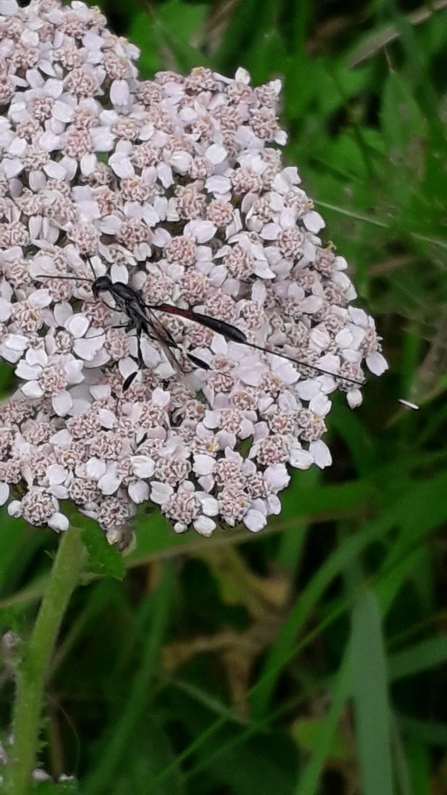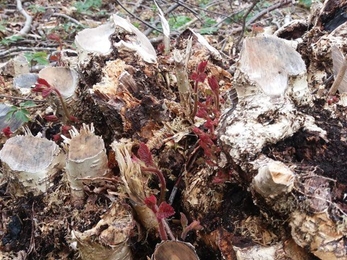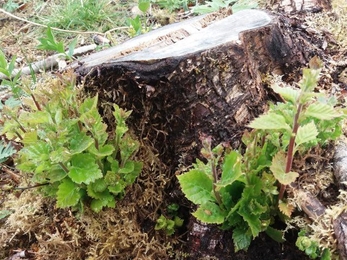Weekly wild news from our reserves, 24 July 2020
Broad bodied chaser - Steve Aylward
The Trust’s ‘Action for Insects’ campaign is increasing people’s awareness of the alarming decline of our insect species and is creating interest in the micro worlds inhabited by them, their ecology and their astonishing behaviour. On his travels around our reserves our South East Reserve Manager, Andrew Excell, spotted the parasitic wasp, Gasteration jaculator, a wasp with some rather gruesome behavioural traits.
Andrew comments, ‘It is quite harmless to humans as the appendage to its abdomen is not a sting but an ovipositor, which they use to lay their eggs. The wasp searches for nests of solitary wasps or bees and once found, the wasp bores its ovipositer into the nest and lays an egg onto the bee or wasp larva in the cell. The egg hatches and the new larva eats the grub of its victim as well as any stored food in the cell. It then remains within the cell over winter before pupating and leaving the nest, emerging as an adult in early summer.

Gasteration jaculator - Andrew Excell
Beewolves’ honey bee bounties
Steve Hook, South East Suffolk Warden, took note of some wasp action and captured this beewolf on film blocking up its nest with a pebble. Steve commented “the beewolf is a large solitary wasp, most often found on sandy areas of lowland heath and coastal dunes. They used to be extremely rare, with just a few scattered populations in southern England, but in the last few decades they have expanded their range dramatically”.
Male bee wolves gather together in a form of lek, where each male defends a small territory and uses pheromones to attract a female. After this, males play no further part in the nesting process.
Female beewolves have to work a lot harder, digging a nesting burrow in a sandy bank or floor. These burrows can be a metre long, with up to 34 side burrows that end in brood chambers. Once excavation has begun on the burrow, the female goes hunting. Females prey on honey bee workers, paralysing them with a sting and carrying them back to their burrow. Up to six paralysed honey bees are placed in each brood chamber, then a single egg is laid on one of the bees and the chamber is sealed with sand. After hatching, the larva feeds on the cache of honey bees before spinning a cocoon to hibernate through winter, ready to emerge in spring.
Beewolf blocking up nest site - Steve Hook (https://youtu.be/MM26zgXS670)
Beewolf blocking up nest site - Steve Hook
Continuous coppicing creates exceptional habitat at Bradfield Woods
Coppice shoots have been springing into life at Bradfield Woods National Nature Reserve. Bradfield Woods is an outstanding example of ancient working woodland and has been continuously coppiced since 1252, making it a unique and precious habitat.
Coppicing involves cutting tree stems back to ground level, which promotes vigorous regrowth each year. The resulting dense bushy growth is excellent habitat for many species, including songbirds such as garden warbler, blackcap and willow warbler. Mammals also thrive here, including stoat, yellow-necked mouse, badger and the rare hazel dormouse. The sheltered rides between the trees are perfect for insects such as butterflies, with 24 species recorded, including rarities such as white admiral and purple emperor.



